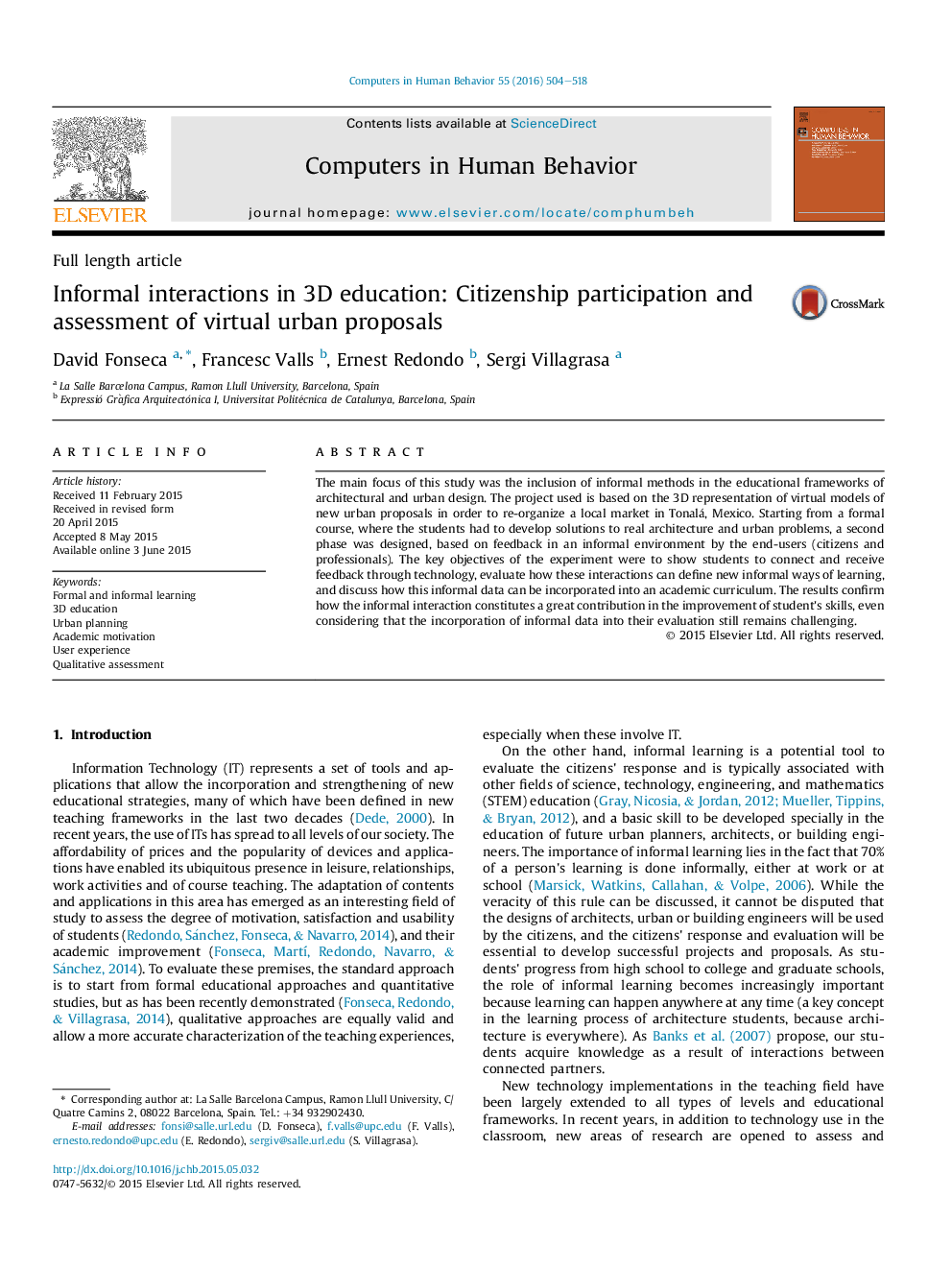| کد مقاله | کد نشریه | سال انتشار | مقاله انگلیسی | نسخه تمام متن |
|---|---|---|---|---|
| 350197 | 618432 | 2016 | 15 صفحه PDF | دانلود رایگان |
• Design an educational project involving virtual and augmented 3D information.
• Informal data provided by citizenship and professionals.
• The social interaction contributes into a crucial training of students.
• The process was designed in order to improve the students' motivation.
• Collaborative interfaces improve spatial, research, and interaction student skills.
The main focus of this study was the inclusion of informal methods in the educational frameworks of architectural and urban design. The project used is based on the 3D representation of virtual models of new urban proposals in order to re-organize a local market in Tonalá, Mexico. Starting from a formal course, where the students had to develop solutions to real architecture and urban problems, a second phase was designed, based on feedback in an informal environment by the end-users (citizens and professionals). The key objectives of the experiment were to show students to connect and receive feedback through technology, evaluate how these interactions can define new informal ways of learning, and discuss how this informal data can be incorporated into an academic curriculum. The results confirm how the informal interaction constitutes a great contribution in the improvement of student's skills, even considering that the incorporation of informal data into their evaluation still remains challenging.
Journal: Computers in Human Behavior - Volume 55, Part A, February 2016, Pages 504–518
